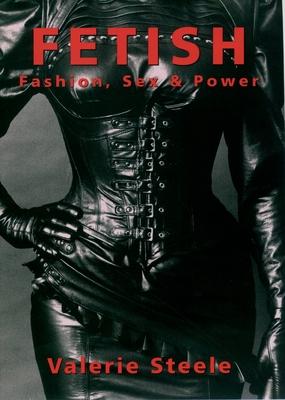
The concept of fetishism has recently assumed a growing importance in critical thinking about the cultural construction of sexuality. Yet until now no scholar with an in-depth knowledge of fashion history has studied the actual clothing fetishes themselves. Nor has there been a serious exploration of the historical relationship between fashion and fetishism, although erotic styles have changed significantly and "sexual chic" has become increasingly conspicuous.
Cultural historian Valerie Steele has devoted much of her career to the study of the relationship between clothing and sexuality, and is uniquely qualified to write this book. Marshalling a dazzling array of evidence from pornography, psychology, and history, as well as interviews with individuals involved in sexual fetishism, sadomasochism, and cross-dressing, Steele illuminates the complex relationship between appearance and identity. Based on years of research, her book Fetish: Fashion, Sex & Power explains how a paradigm shift in attitudes toward sex and gender has given rise to the phenomenon of fetish fashion.
"Steele is to fetish dressing what Anne Rice is to vampires," writes Christa Worthington of Elle magazine, "the intellectual interpreter of...wishes beyond our ken." According to Steele, fetishism shows how human sexuality is never just a matter of doing what comes naturally; fantasy always plays an important role. Steele provides provocative answers to such questions as: Why is black regarded as the sexiest color? Is fetishizing the norm for males? Does fetish fashion reflect a fear of AIDS? And why do so many people love shoes?
The concept of fetishism has recently assumed a growing importance in critical thinking about the cultural construction of sexuality. Yet until now no scholar with an in-depth knowledge of fashion history has studied the actual clothing fetishes themselves. Nor has there been a serious exploration of the historical relationship between fashion and fetishism, although erotic styles have changed significantly and "sexual chic" has become increasingly conspicuous.
Cultural historian Valerie Steele has devoted much of her career to the study of the relationship between clothing and sexuality, and is uniquely qualified to write this book. Marshalling a dazzling array of evidence from pornography, psychology, and history, as well as interviews with individuals involved in sexual fetishism, sadomasochism, and cross-dressing, Steele illuminates the complex relationship between appearance and identity. Based on years of research, her book Fetish: Fashion, Sex & Power explains how a paradigm shift in attitudes toward sex and gender has given rise to the phenomenon of fetish fashion.
"Steele is to fetish dressing what Anne Rice is to vampires," writes Christa Worthington of Elle magazine, "the intellectual interpreter of...wishes beyond our ken." According to Steele, fetishism shows how human sexuality is never just a matter of doing what comes naturally; fantasy always plays an important role. Steele provides provocative answers to such questions as: Why is black regarded as the sexiest color? Is fetishizing the norm for males? Does fetish fashion reflect a fear of AIDS? And why do so many people love shoes?
Paperback
$36.93